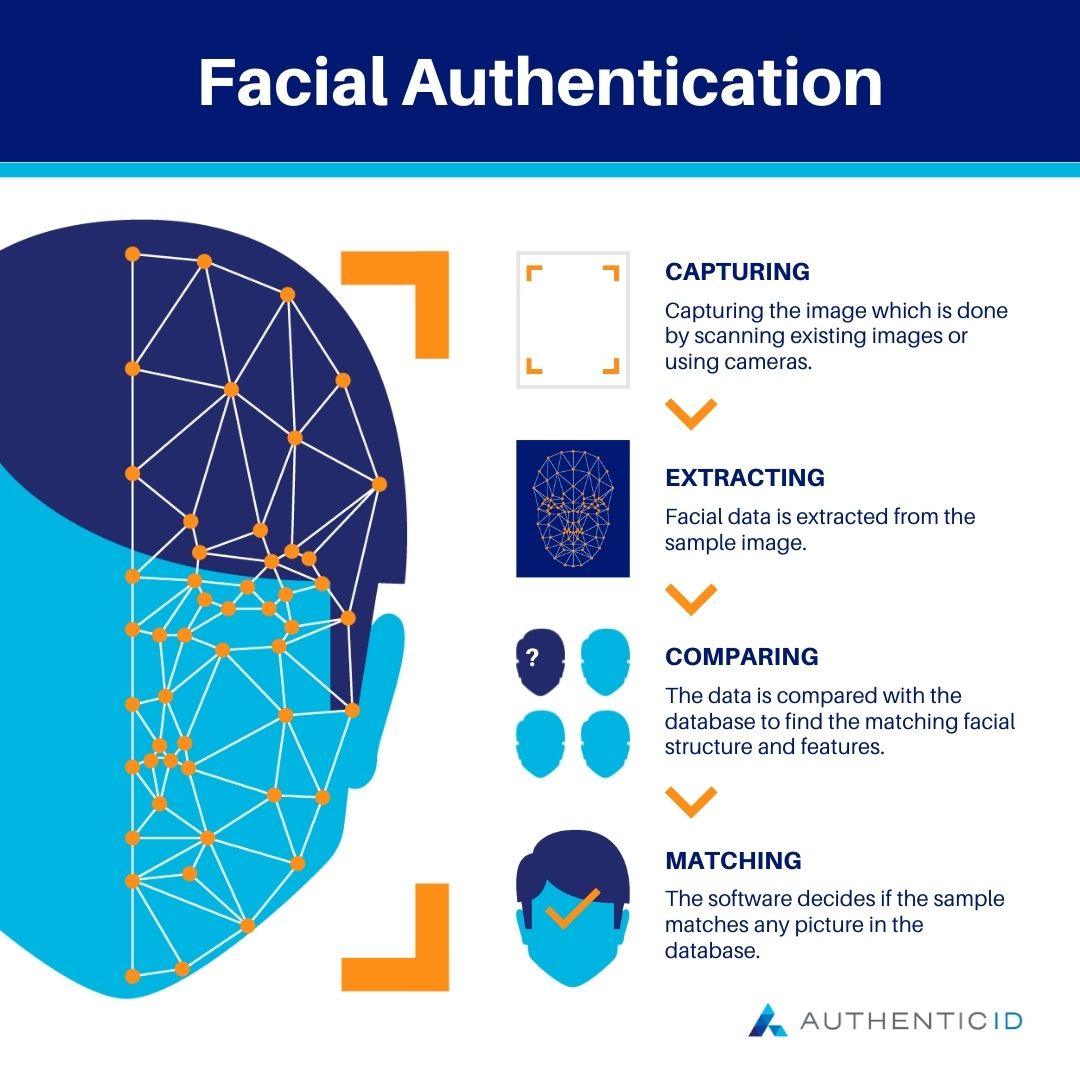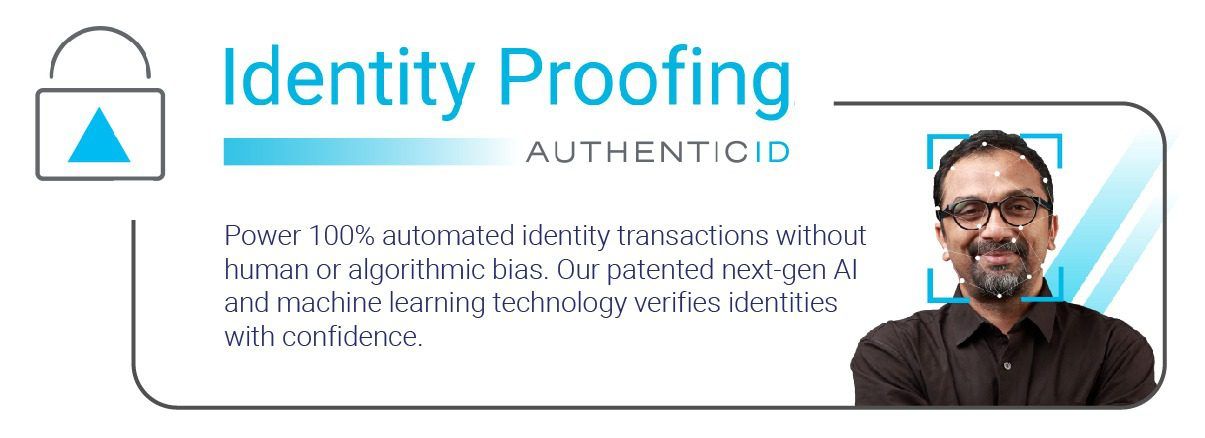Facial authentication, also known as facial verification, is a facial biometrics category that relies on a “one-to-one” matching technology. Facial authentication matches a person’s face to a previously verified image from a trusted source, like a government ID or previously enrolled and authenticated biometric selfie, with the user’s consent. This form of biometric authentication is primarily used for account protection and security.

How does Facial Authentication Work?
Facial authentication technology uses algorithms to match an image of a person’s face with a previously stored image of their face to verify their identity.
Here are the steps in facial authentication:
- Capture an image: The facial recognition system captures an image of the person’s face using a camera or a video. The image is preprocessed to remove any background noise or interference and to isolate the face from other objects in the image.
- Feature extraction: The system analyzes the facial features in the image, such as the shape of the nose or the contour of the jawline. These features are then converted into a mathematical representation that can be compared to other facial features in a database.
- Database comparing: The mathematical representation of the facial features is compared to the representations of previously stored images in a database. If the system finds a match with a high level of confidence, it will authenticate the person’s identity.
- Matching & decision making: The system makes a decision based on the level of confidence in the match. If the match is confident, the person is authenticated. If the match is not confident, the system may request additional information or deny access.
Where is Facial Authentication Used?
Facial recognition technology is being used in a variety of applications across different industries. Some of the most common applications include:
- Financial Services: Facial recognition is used in financial services to enhance security and prevent fraud. It can be used for identity verification and authentication during banking transactions.
- Biometric Access Control: Facial recognition is used for access control in various settings such as workplaces, schools, and government applications. It can be used to unlock smartphones, laptops, and other devices.
- Retail and Marketing: Facial recognition is used in retail and marketing to analyze customer behavior, demographics, and preferences. It can be used to personalize shopping experiences, track customer traffic, or for age verification for age-restricted purposes.
- Healthcare: Facial recognition is used in healthcare for patient identification, tracking medication usage, and monitoring patient behavior.
- Security and Law Enforcement: Facial recognition is used in security and law enforcement applications to identify suspects, track criminals, and enhance public safety. For example, it is used in airports, border control, and stadiums for security purposes.
Facial authentication technology is becoming increasingly popular for its convenience and security, but it has also raised concerns about privacy and accuracy.
